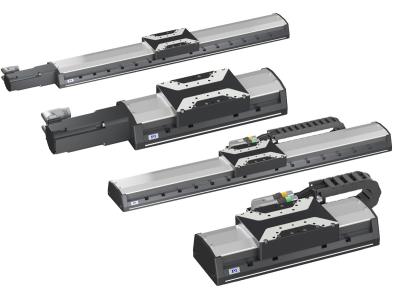
PI’s new L-412/V-412 linear stage family is designed for high-precision industrial automation and positioning applications with medium loads. Both linear motor-driven and ballscrew-driven versions are offered to cover high speed motion and to provide high push/pull force for vertical applications.
Both models come with travel ranges from 2” to 24” (52mm to 610mm). Applications include high demands on dynamics, precision, smooth scan motion, short settling times and low tracking error, such as required in laser cutting, scanning, digital printing, electronics assembly and inspection, AOI (Automatic Optical Inspection), automation, and flat panel manufacturing.
The L-412 ballscrew model is equipped with a synchronous servomotor, and can be relubricated without disassembly, further extending its high reliability and long lifetime. A cover strip on the side and the purge air connection prevent contamination of the working components by particles. An optional holding brake allows an increase in its usability as a Z-axis stage.
Its higher-speed V-412 sibling features an ironless linear motor, and comes with an optional absolute linear encoder. The 3-phase, frictionless magnetic direct drive provides a peak force of 151N to the motion platform. This non-cogging motor design provides vibrationless smooth motion at high and low velocities and superior position control. Also like its ballscrew family member, the V-412 has a cover strip on the side and the purge air connection prevents contamination of the working components by particles.
Contact Details
Related Glossary Terms
- flat ( screw flat)
flat ( screw flat)
Flat surface machined into the shank of a cutting tool for enhanced holding of the tool.
- linear motor
linear motor
Functionally the same as a rotary motor in a machine tool, a linear motor can be thought of as a standard permanent-magnet, rotary-style motor slit axially to the center and then peeled back and laid flat. The major advantage of using a linear motor to drive the axis motion is that it eliminates the inefficiency and mechanical variance caused by the ballscrew assembly system used in most CNC machines.







